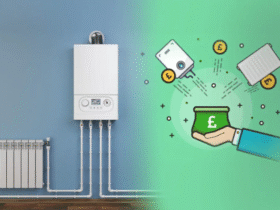The healthcare industry, characterized by its complexity and the vast amounts of data it generates, has seen a significant transformation over the past few decades. Central to this transformation are advancements in medical billing and coding software, process automation, and interoperability. These technological innovations not only streamline administrative tasks but also enhance patient care, reduce costs, and improve overall efficiency. This article delves into the significance of these advancements, exploring how they intertwine to revolutionize the healthcare landscape.
The Evolution of Medical Billing and Coding Software
Medical billing and coding software play a crucial role in the healthcare industry. They ensure that healthcare providers are accurately reimbursed for their services while maintaining compliance with regulations. Traditionally, medical billing and coding were manual, labor-intensive processes prone to human error. However, the advent of sophisticated software has automated these tasks, reducing errors and increasing efficiency.
Modern medical billing and coding software systems are equipped with advanced features such as real-time updates, integration with electronic health records (EHRs), and compliance with the latest coding standards like ICD-10 and CPT. These systems facilitate accurate documentation, coding, and billing, ensuring that healthcare providers receive timely and correct payments for their services.
Process Automation in Medical Billing and Coding
Process automation in medical billing and coding involves the use of technology to perform routine tasks without human intervention. Automation streamlines various aspects of the billing and coding process, from data entry and claim submission to follow-up and payment posting. It can also help ensure the accurate application of complex coding rules, such as the correct use of modifier 59 to distinguish procedures that are not typically reported together. Here are some key benefits of process automation:
1. Enhanced Accuracy
Manual data entry is susceptible to errors, which can lead to claim denials and delayed payments. Automated systems significantly reduce the likelihood of errors by accurately capturing and processing data. This ensures that claims are coded correctly and submitted promptly, leading to faster reimbursement.
2. Increased Efficiency
Automation speeds up the billing and coding process by eliminating the need for repetitive manual tasks. This allows healthcare staff to focus on more complex and value-added activities, such as patient care and revenue cycle management. Consequently, healthcare providers can handle larger volumes of claims without compromising on accuracy or efficiency.
3. Cost Reduction
By automating billing and coding processes, healthcare organizations can reduce administrative costs associated with manual labor, training, and error correction. Automation also minimizes the need for physical storage of paper records, further reducing costs and enhancing data security.
4. Improved Compliance
Healthcare regulations and coding standards are constantly evolving. Automated billing and coding systems are designed to stay up-to-date with the latest changes, ensuring compliance with regulatory requirements. This reduces the risk of penalties and legal issues arising from non-compliance.
Interoperability in Healthcare
Interoperability refers to the ability of different healthcare systems and software applications to communicate, exchange, and interpret data seamlessly. It is a critical aspect of modern healthcare, enabling the efficient sharing of patient information across different platforms and stakeholders.
1. Facilitating Coordinated Care
Interoperability allows healthcare providers to access comprehensive patient information from various sources, including hospitals, clinics, laboratories, and pharmacies. This holistic view of a patient’s medical history facilitates coordinated care, leading to better diagnosis, treatment, and outcomes.
2. Reducing Redundancies and Errors
When healthcare systems are interoperable, there is less need for duplicate tests and procedures, as providers can easily access existing patient data. This reduces redundancies, lowers healthcare costs, and minimizes the risk of errors arising from incomplete or inaccurate information.
3. Enhancing Patient Engagement
Interoperability empowers patients by giving them access to their own health information. Patients can actively participate in their care, make informed decisions, and share their data with different providers as needed. This enhances patient engagement and satisfaction.
4. Supporting Public Health Initiatives
Interoperable systems enable the aggregation and analysis of health data on a large scale. This is invaluable for public health initiatives, such as tracking disease outbreaks, monitoring population health trends, and conducting research. Timely and accurate data sharing is crucial for effective public health responses.
The Synergy Between Process Automation and Interoperability
The integration of process automation and interoperability in medical billing and coding software creates a synergistic effect, amplifying the benefits of both technologies. Here’s how they work together to revolutionize healthcare:
1. Streamlined Workflows
Automation and interoperability together process automation interoperability streamline workflows by automating routine tasks and ensuring seamless data exchange between different systems. This results in faster, more efficient processes, reducing administrative burdens and freeing up resources for patient care.
2. Real-Time Data Access
Interoperability ensures that data is readily available across different platforms, while automation processes this data in real time. Healthcare providers can access up-to-date patient information instantly, leading to more accurate and timely decision-making.
3. Enhanced Revenue Cycle Management
Automated billing and coding systems integrated with interoperable EHRs optimize revenue cycle management. Accurate coding, timely claim submission, and seamless data exchange with payers reduce claim denials and expedite payments, improving the financial health of healthcare organizations.
4. Improved Patient Outcomes
The combination of automation and interoperability enhances patient care by providing healthcare providers with comprehensive, accurate, and timely information. This supports better diagnosis, treatment planning, and care coordination, ultimately leading to improved patient outcomes.
5. Scalability and Adaptability
Automated and interoperable systems are highly scalable and adaptable. They can easily accommodate changes in healthcare regulations, coding standards, and technological advancements. This ensures that healthcare organizations remain compliant and up-to-date without significant disruptions.
Challenges and Considerations
While the benefits of medical billing and coding software process automation and interoperability are substantial, there are challenges and considerations to keep in mind:
1. Data Security and Privacy
The exchange of sensitive patient information across different systems raises concerns about data security and privacy. Healthcare organizations must implement robust security measures to protect patient data and comply with regulations such as HIPAA.
2. Integration Complexity
Integrating different systems and ensuring seamless interoperability can be complex and resource-intensive. Healthcare organizations need to invest in the right technology and expertise to achieve effective integration.
3. Change Management
The transition to automated and interoperable systems requires significant changes in workflows and processes. Healthcare organizations must manage this transition carefully, providing adequate training and support to staff to ensure a smooth implementation.
4. Cost Implications
While automation and interoperability offer long-term cost savings, the initial investment in technology and infrastructure can be substantial. Healthcare organizations need to weigh the costs against the potential benefits and plan accordingly.
Conclusion
The integration of medical billing and coding software process automation and interoperability is transforming the healthcare industry. These technological advancements streamline administrative tasks, enhance data accuracy, and improve patient care. By embracing automation and interoperability, healthcare organizations can reduce costs, increase efficiency, and stay compliant with evolving regulations. While challenges remain, the potential benefits far outweigh the hurdles, making these innovations indispensable in the modern healthcare landscape. As technology continues to evolve, the healthcare industry will undoubtedly see further improvements in billing, coding, and overall patient care, paving the way for a more efficient and effective healthcare system.














Leave a Reply